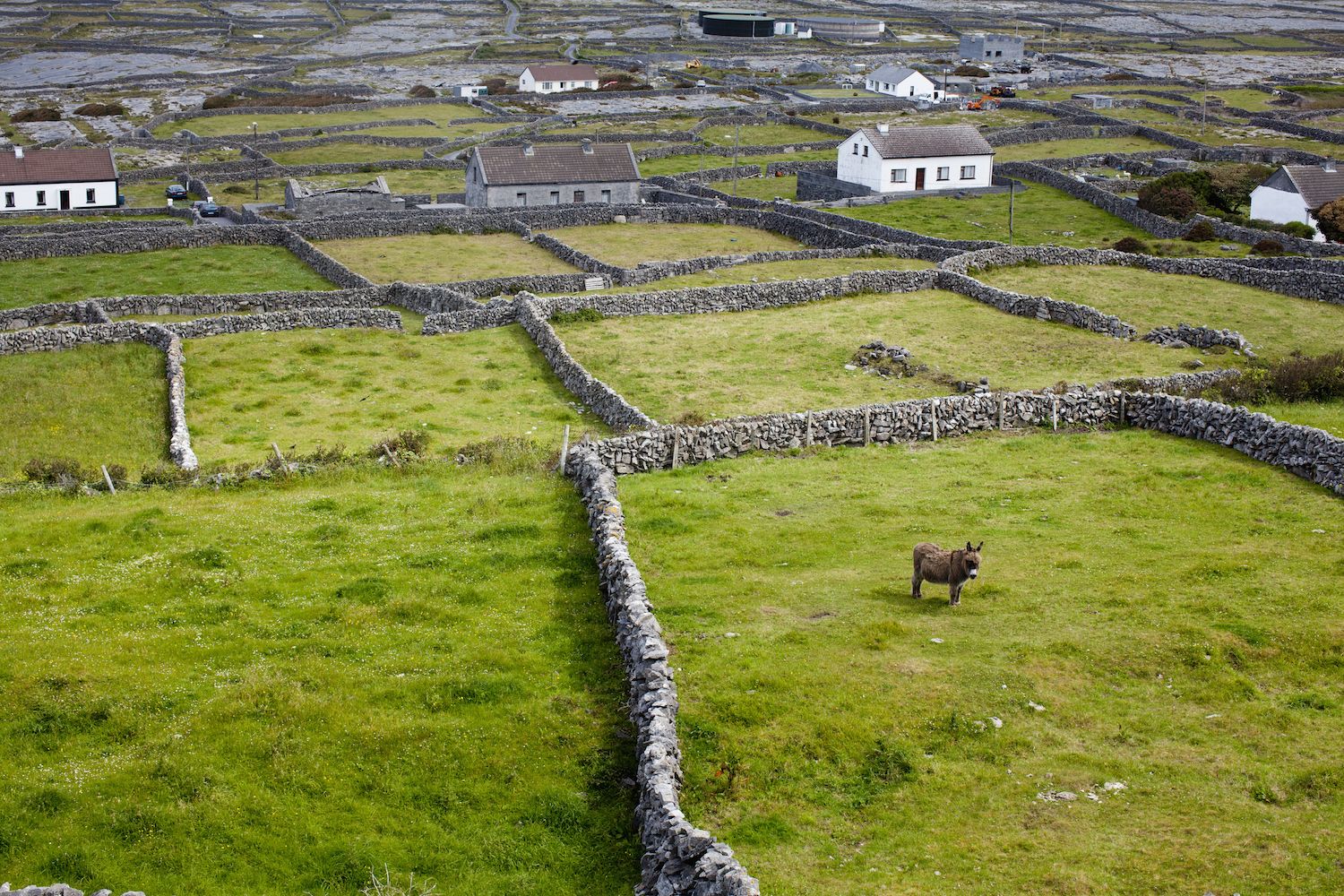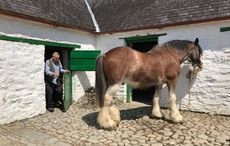Posted by PatriciaHarty at 6/5/2009 3:27 PM EDT
She held the two-year-old baby girl in her arms. The child was so light she was afraid that she would crush her or move in such a way as to press against her sores.
She had never been this close to starvation before.
Joanne from Co. Down is telling us what it is like to be a volunteer with the Irish relief organization Concern Worldwide. She spent two and a half years in the Congo, and will soon take up a position in Rwanda.
The occasion is the annual Women of Concern luncheon in New York, which was held Wednesday, June 3, at the Hilton Hotel.
When I hear stories of modern day starvation it stirs up some historic memories imprinted in my DNA, like an old wound that throbs with the slightest touch.
Joanne talks about the word “displacement” and what it really means for people to be left with nothing. How an office cleaner for Concern turned up for work clean and on time, despite the fact that she had lost her home four days earlier and was living in a shelter she’d made of banana leaves.
When I hear the word displacement, I think of the over 200,000 evictions that took place in Ireland during the Famine.
When I hear of children starving, I think of Irish children.
When I hear the word famine, I think that in Ireland’s case it’s a word that’s misused. There was a crop failure, but there was food in the country.
In Skibbereen, where Ireland’s First National Famine Commemoration Day was marked on a recent Sunday in May, 28,000 people starved to death as cattle, wheat, oats and other foodstuffs were shipped out of Cobh harbor just 35 miles away.
A storeroom on the dock was used to house orphan children when all the provisions had been shipped away.
I was a child of seven when I first learned of the Irish Famine.
“They had to eat grass,” the teacher said.
As I walked home across the fields from school that day, I imagined a young girl with green drool around her mouth. It was my first hint that things were not what they seemed, that we had a past, that the Irish countryside was a haunted place.
When I asked my mother about the famine she told me the story of Anne Frank, the young girl who hid from the Nazis. I suppose she wanted me to know that the Irish didn’t hold a moratorium on suffering. Still, when people talk of the famine I invariably think of Anne Frank, and I hear my mother’s voice as she says the phrase, “Man’s inhumanity to man.”
In school they told us that the survivors got on “coffin” ships. They didn’t tell us how many died on the ocean. And no one mentioned Grosse Ile, the island quarantine station in Canada where thousands are buried in mass graves.
So many died, over a million, yet, almost every day in my capacity as editor of Irish America magazine, I hear stories of survivors.
“They walked to Maine and hid from vigilante groups along the border,” George Mitchell, the former senator from Maine, said of the Irish who came through Grosse Ile and settled in Maine.
Ted Sullivan, one of Irish America’s Business 100 honorees, told me of his great-great-grandfather James who arrived in New Orleans as a boy of ten. His parents had died on the ship. A priest helped James find a job bringing water to the ships. Later he fought in the Civil War and got a land grant in Texas.
William Ford, a young man from County Cork, survived being swept overboard (other reports say he jumped overboard as his ship waited to dock at Grosse Ile) and made his way to Michigan. In 1863, his son Henry Ford was born on a farm west of Detroit.
Mary Pat Kelly wrote a book based on the experience of her great-grandmother Honora Kelly, a widow who immigrated with her five children to Chicago, where her sons found work in the slaughterhouses and her grandson Edward Joseph Kelly became the city’s mayor in 1933.
Mary Pat was one of several speakers at a series of lectures in New York organized by vice consul general Breandán O’Caollaí as part of the Consulate’s contribution to Ireland’s national commemoration.
Cathal Póirtéir told of Irish language accounts – an emaciated boy who couldn’t digest the hard kernels of Indian corn sent over as a relief measure.
Prof. Christine Kinealy spoke of the international response, including money raised by Irish soldiers serving with the British forces in Calcutta, and the $113 raised by the Choctow Indians.
Dr. Maureen Murphy talked about the Great Irish Famine Curriculum that she designed and helped place in New York schools.
Mary Pat also took part in a commemoration at Old St. Pat’s in Chicago. She explained that she uses the term Great Starvation to describe the calamity, as many Irish-Americans don’t know that food was being exported out of Ireland at the time.
A ceremony was also held on Grosse Ile. This small island lying east of Quebec remains a very poignant link to the Irish Famine.
In the summer of 1847 some 40 ships from Ireland line up in the St. Lawrence River waiting to disembark at the Quarantine Station there. One ship reported 158 dead and 186 sick of 596 passengers; another ship had 96 dead and 112 sick out of 399, and still another 78 dead and 104 sick of 331.
Some 7,000 Irish are buried in three mass graves on the island.
In 1909, the Hibernians erected a 40-foot-high Celtic cross on Grosse Ile in memory of the dead.
It was the first memorial to the Irish Famine.
It’s important that we remember our dead. But as Mother Jones, the great American Labor leader who was born in County Cork in 1837 and emigrated through Canada, said, “Pray for the dead and fight like hell for the living.”
Unless our old wounds throb for those who live in hunger and fear today we have learned nothing from our own past.
Support for Concern Worldwide, said Joanne, makes it possible for mothers to learn trades and earn income. She cited one mother as saying, “now I don’t have to go begging anymore; now I can feed my family.”
Closer to home, one of the best commemorations to the Irish famine happened in Springfield, Massachusetts where an area called Hungry Hill was settled by Famine immigrants from Cork and Kerry. Members of the John Boyle O’Reilly Club arranged a food drive for the Open Pantry as their way to honor those who died. “We wanted to do our part, to see if we could help out,” said Eric Devine, president of the Club.




Comments